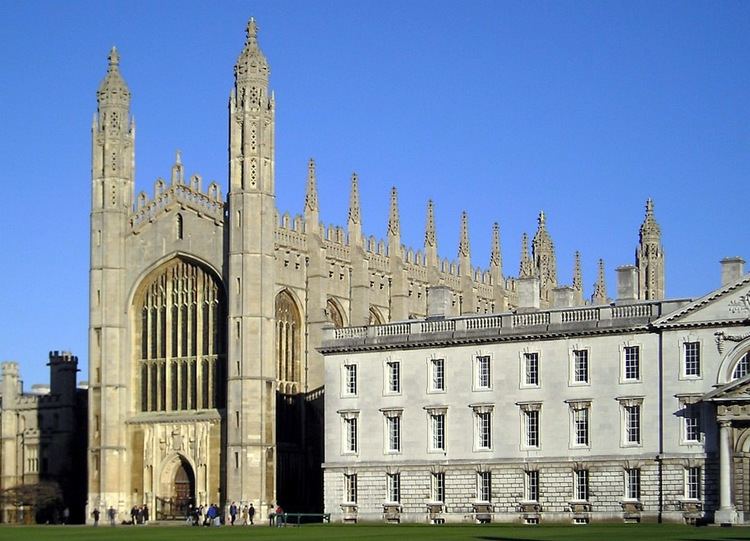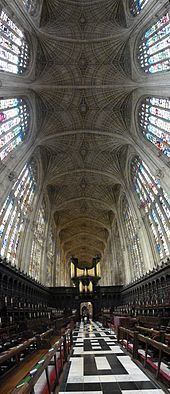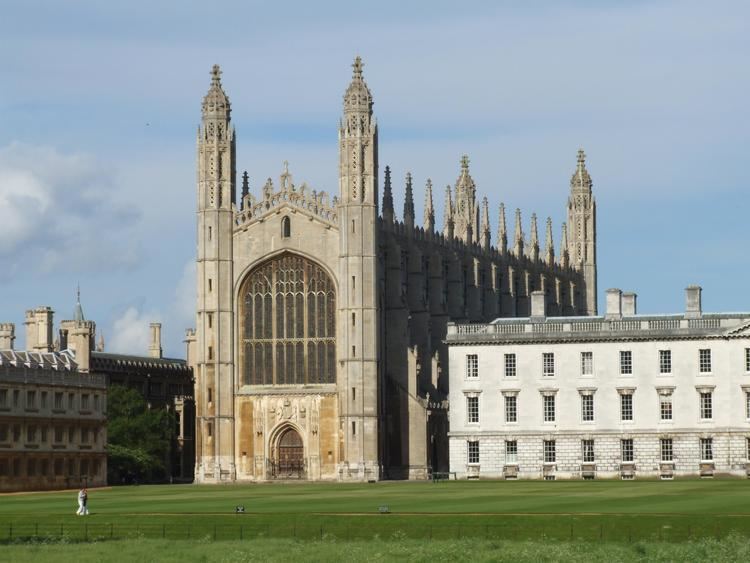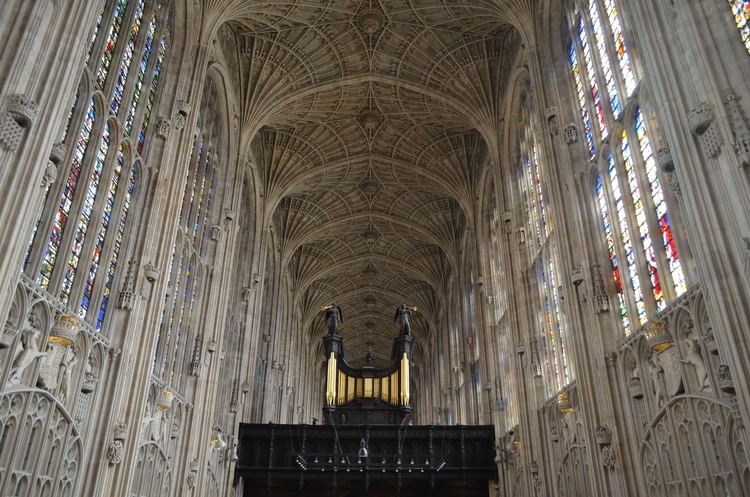Construction started 1446 Heritage designation Listed building | Previous denomination Roman Catholic Functional status Active Width 12 m Architect William Vertue | |
 | ||
Similar The Backs, River Cam, Cambridge University Botanic G, Fitzwilliam Museum, King's College Chapel | ||
King s college chapel cambridge a gravity defying hall of light
King's College Chapel is the chapel at King's College in the University of Cambridge. It is considered one of the finest examples of late Perpendicular Gothic English architecture. The chapel was built in phases by a succession of kings of England from 1446 to 1515, a period which spanned the Wars of the Roses. The chapel's large stained glass windows were not completed until 1531, and its early Renaissance rood screen was erected in 1532–36. The chapel is an active house of worship, and home of the King's College Choir. The chapel is a significant tourist site and a commonly used symbol of the city of Cambridge.
Contents
- King s college chapel cambridge a gravity defying hall of light
- Building of the chapel
- Great windows
- Rood screen
- Current use
- Dean of the Chapel
- Recent deans
- References

Building of the chapel

Henry VI planned a university counterpart to Eton College (whose chapel is very similar, but not on the scale intended by Henry). The King decided the dimensions of the Chapel. The architect of the chapel is disputed: Reginald Ely, who was commissioned in 1444 as the head press mason, was a possible architect; however, Nicholas Close (or Cloos) was recorded as the "surveyor", which has been generally accepted to be synonymous with architect. The first stone of the Chapel was laid, by Henry himself, on the Feast of St James the Apostle, 25 July 1446, the College having been begun in 1441. By the end of the reign of Richard III (1485), despite the Wars of the Roses, five bays had been completed and a timber roof erected. Henry VII visited in 1506, paying for the work to resume and even leaving money so that the work could continue after his death. In 1515, under Henry VIII, the building was complete but the great windows had yet to be made.

It features the world's largest fan vault, constructed between 1512 and 1515 by master mason John Wastell. The Chapel also features fine medieval stained glass and, above the altar, The Adoration of the Magi by Rubens, originally painted in 1634 for the Convent of the White Nuns at Louvain in Belgium. The painting was installed in the Chapel in 1968, which involved the restoration of the sanctuary floor leading up to the High Altar to its original level (gradations having been created in 1774 by James Essex).

During the Civil War the chapel was used as a training ground by Oliver Cromwell's troops, but escaped major damage, possibly because Cromwell himself, being a Cambridge student, gave orders for it to be spared. Graffiti left by these soldiers is still visible on the north and south walls near the altar. During World War II most of the stained glass was removed and the chapel again escaped damage.
Great windows

The windows of King's College Chapel are some of the finest in the world from their era. There are 12 large windows on each side of the chapel, and larger windows at the east and west ends. With the exception of the west window, they are by Flemish hands and date from 1515 to 1531. Barnard Flower, the first non-Englishman appointed as the King's Glazier, completed four windows. Gaylon Hone and three partners (two English and one Flemish) are responsible for the east window and 16 others between 1526 and 1531. The final four were made by Francis Williamson and Symon Symondes. The one modern window is that in the west wall, which is by the Clayton and Bell company and dates from 1879.
Rood screen

This large wooden screen, which separates the nave from the altar and supports the chapel organ, was erected in 1532–36 by Henry VIII in celebration of his marriage to Anne Boleyn. The screen is an example of early Renaissance architecture: a striking contrast to the Perpendicular Gothic chapel; Sir Nikolaus Pevsner said it is "the most exquisite piece of Italian decoration surviving in England".
Current use

The Chapel is actively used as a place of worship and also for some concerts and college events. Notable college events include the annual King's College Music Society May Week Concert, held on the Monday of May Week. The event is highly popular with students, alumni and visitors to the city.
The Chapel is noted for its splendid acoustics. The world-famous Chapel choir consists of choral scholars, organ scholars (male students at the college), and choristers (boys educated at the nearby King's College School), conducted by Stephen Cleobury. The choir sings services on most days in term-time, and also performs concerts and makes recordings and broadcasts.
In particular, it has broadcast its Nine Lessons and Carols on the BBC from the Chapel on Christmas Eve, during which a solo treble sings the first verse of Once in Royal David's City. There is also a chapel choir of male and female students, King's Voices, which sings Evensong on Mondays during term-time.
The Chapel is widely seen as a symbol of Cambridge (for example in the logo of Cambridge City Council).
Dean of the Chapel
The Dean of the Chapel is responsible to the College Council and the Governing Body for the conduct of services within the Chapel. King's College Chapel, like other Cambridge colleges, is not formally part of the structure of the Church of England, but the Dean is customarily licensed by the Bishop of Ely. Both he and the Chaplain take a regular part in chapel services: each is normally present at services six days a week during Full Term, and each preaches once or twice a term. The Chapel is run by a Chapel Committee chaired by the Dean. A Use of Choirs Committee, also chaired by the Dean, organises the engagements of the Chapel choir.
